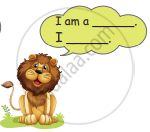Advertisements
Advertisements
Question
The quill is the central element of the poem – what does it symbolise?
Solution
The quill symbolises a new script. It is symbolic of the transition of a script, the characteristics that a script delivers to its successive script in legacy. Let us have a clearer idea of it by taking the evolution of Dogri's scripts into account. Around the time when the Dogri language developed, it used its native script Sharade, which evolved from the original Brahmi script. Sharade then came to be replaced by Devanagari, used presently. In the poem Mother Tongue, Padma Sachdev bemoans the depreciation of Sharade script. She explains a script's evolution by citing an example of a reed plant.
APPEARS IN
RELATED QUESTIONS
How did Helen Keller enjoy her visit to the World fair? (120‒150 words)
Complete the following statements :
(ii) Maharashtra depends on India, because ................
Big male elephants throw logs at electric fences because
Answer the following question in 200-250 words:
What is the main theme of 'The Diary of a Young Girl'?
Discuss the following in pairs
Behind the public face of the people in various occupations is a whole saga of personal suffering and joy which they wish to share with others.
What is the central argument of the speaker?
Read the following statement and mark those that apply to you.
Someone has extended a hand of friendship towards me and I have not accepted it.
How do stories/biographies of such famous people help youngsters?
Pick out some sentences from the lesson that convey a general truth.
Given below are various professions in column A and in column B, the nature of work in respective professions. Match the columns.
| A | B |
| (i) Anaesthetist | (a) Specialist in the treatment of problems concerning the position of teeth and jaws. |
| (ii) Pharmacist | (b) A person who designs buildings and supervises the process of constructing them. |
| (iii) Orthodentist | (c) A person who is in charge of a newspaper or of a part of a newspaper. |
| (iv) Dermitologist | (d) The medical study of the skin and its diseases. |
| (v) Architect | (e) A person who has been trained to prepare medicines and sell them to the public. |
| (vi) Chartered Accountant | (f) A person whose job is to give drugs which makes the person not feel pain especially in preparation for a medical operation. |
| (vii) Editor | (g) A person who is engaged in the profession of accounting and examining the statements and records of accounts. |
Pick out three lines that create an image in your mind of bees busy at work.
Choose the odd one out :
Flute, Snug, Quince, Cobweb.
Write a recipe for the stone soup.
Talk about the good qualities of any one person you do not like. (You need not name the person.)
Discuss:
In the story, human settlements are mentioned but not cities or villages. Why is it so?
Find the different units of measurement mentioned in the passage and get more information about them from the internet.
Write the characteristics of a good listener.
Discuss the following in group.
Do’s and Don’ts for young children.
How did the parents support and encourage the young seagull’s brothers and sister?
Answer the question in a paragraph of about 100 – 150 word.
Narrate how Prospero made his enemies repent to restore his dukedom.
Complete the sentence given below with word/phrase.
The hole in the ground was filled______.
Where is the poet going in the dream?
Name the character or speaker.
"Why don't you do that yourself?"
What robot will you make? Why?
The bird-catcher had a pigeon in his _______.
The bird-catcher decided to sit under the ________.
Why did Jana chase the squirrel?
Name the animal and sound it makes.

Read the passage given below and make notes.
To match the best cities across the world, the Government of India initiated ‘smart cities’ to drive economic growth and improve the quality of life of people. The agenda under smart city promises to resolve urban sustainability problems. Urban forests provide a range of important ecosystem services that are critical for the sustainability of cities. Urban forestry, which is defined more as ‘Management of Trees’ contributes to the physiological, sociological and economic well-being of the society. Mangroves, lakes, grasslands, and forests in and around our cities, act as sponges that absorb the air and noise pollution and they present themselves as our cultural and recreational hotspots. However, these spots are rapidly being reclaimed and replaced in the name of development. Presence of urban green has shown to increase the economic value of the place.
Urban forests contribute to reduce the cost of building storm water drain systems for municipalities and neutralizing urban heat island effect. Plants not only provide shade but also help in regulating the micro-climate. They help regulate energy budgets, improve air quality, and curtail noise pollution. Trees, herbs, shrubs, and grasses arrest sedimentation and prevent other pollutants from entering our water systems. This will give a chance for our urban lakes and rivers to recover and help improve aquatic ecosystems. Biodiversity also gets a boost through the urban forestsand helps create corridors connecting the forest areas. High biodiversity areas can also help to build resilient ecosystems. Availability of forests within our urban areas gives an opportunity for children to connect to the natural environment and learn about native species.
